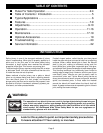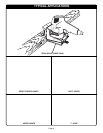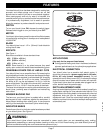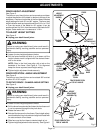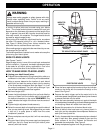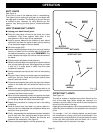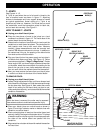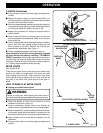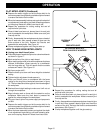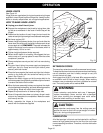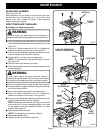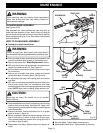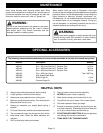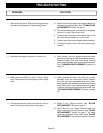
Page 13
1
2
3
0
3
4
5
1
6
90
°
4
5°
T- JOINT
OPERATION
T- JOINTS
See Figures 11-15.
A T-joint is used when the end of a board is joined to the
face of another board as shown in figure 11. Attaching
shelves to bookcases and inner support braces to frames
are typical applications. Actual cutting of a T-joint is as
simple as any other cut. However, it is critical that you mark
the centerlines, mark the intersection points for each slot,
and cut each slot correctly.
See Figure 11.
HOW TO MAKE T- JOINTS
■ Unplug your detail biscuit joiner.
■ Place the two pieces of wood to be joined on a level
workbench as shown in figure 12. The inside face of the
vertical board should be facing up.
■ Determine the location of each biscuit joint and mark the
centerlines on each board as shown. The centerlines for
both boards must line-up with each other. Measure
carefully, these measurements must be accurate and
precise. TIP: Measure twice and cut once. In addition to
the centerlines lining up, the spacing of the biscuit slots
from side-to-side must also match.
■ Plug your biscuit joiner into power supply and cut slots in
all boards that require end slots.
See Figure 13.
Follow
procedures explained in "Edge-To-Edge Joints". Rotate
fence angle to 90°, set fence height at desired dimension
on the scale, select the correct depth of cut setting for the
biscuit size you plan to use, clamp workpiece securely,
then cut each slot at the marked centerline intersection.
■ Next, you must remove the fence from your biscuit joiner
in order to cut slots into the face of the vertical board.
TO REMOVE FENCE:
■ Unplug your detail biscuit joiner.
■ Loosen height adjustment knobs, pull fence forward and
slide it down the front base until it can be removed through
the key hole slots.
See Figure 14.
Next, select the correct
depth of cut setting for the biscuit size you plan to use,
clamp workpiece securely, and cut each slot at the marked
centerline intersection.
WARNING:
When the fence is removed, the cutter may be exposed.
Use extreme caution to avoid serious personal injury.
■ Place your biscuit joiner on vertical board as shown in
figure 15 and align indicator marks on bottom shoe with
centerline on vertical board.
■ Place a straight piece of wood on the vertical board and
securely clamp it flush against the bottom shoe. This piece
of wood is used for a fence or guide. It must be square with
the sides of the vertical board and parallel with the
centerline.
■ Align centerline on bottom of shoe with marked intersection
for biscuit slot.
CENTERLINE
MARK(S)
Fig. 11
Fig. 13
BISCUIT(S)
HORIZONTAL BOARD
BISCUIT SLOT(S)
BOARD
CENTERLINES
BISCUIT SLOT
CENTERLINE MARK(S)
Fig. 12
VERTICAL BOARD
CLAMP
HORIZONTAL BOARD
TO CUT END SLOTS IN
HORIZONTAL BOARDS



